The dietary habits of animals can vary wildly; what is poisonous and possibly deadly to some might be nutrient-rich for others.
With emus, the answer is a tad bit easier and less strict in terms of what they can and cannot consume safely. You are dealing with a very durable digestive tract with these birds, who are known to gulp up small stones to aid in their digestive process.
Emus can safely ingest plants, fruit, vegetables, meat, grains, feed pellets, and most meals that humans will eat.
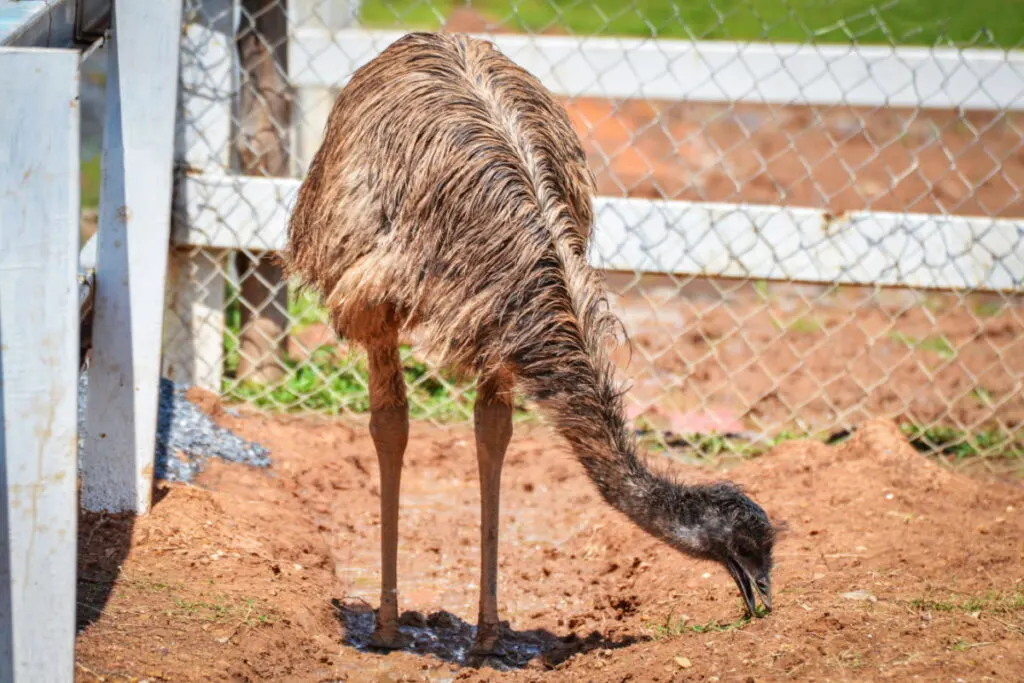
In fact, if you are around a flock of emus it is strongly recommended you keep food hidden, as they may (politely and courteously) attack you for your lunch.
For more information on the types of foods they can take in, I’ll go into much more detail below.
Disclaimer: If your bird is not eating or showing signs of sickness, you should contact a veterinarian immediately. The only exception is incubating males will not eat or drink, but always trust your local vet over internet articles!
It should be said that the active nature of emus requires them to drink large quantities of water, with them averaging about 2.3 to 4.7 gallons a day.
Table of Contents
Food Groups Emus Can Safely Consume
Meat
Emus are omnivorous and very much equal opportunity when it comes to what they will consume.
High protein requirements recommend that some amount of meat be introduced into their diet for the bird to remain healthy.
A wild emu might consume a wide variety of insects that aren’t venomous, not excluding grasshoppers, roaches, spiders, etc.
One in captivity, however, may have to settle for whatever their owner has on hand. High protein dog food has been used, chicken eggs, certain food pellets with a higher protein percentage, they will even consume chicken!
On average, their diet should consist of about 15 percent to 20 percent protein to make sure they grow healthy and without medical complications.
Emus held in captivity that are given a more varied diet can grow to become quite selective eaters. One shouldn’t take it personally or as a sign of sickness if they leave a couple of things uneaten if they have had a larger group of food to choose from. They are developing a refined palette courtesy of their doting owner!
Feed
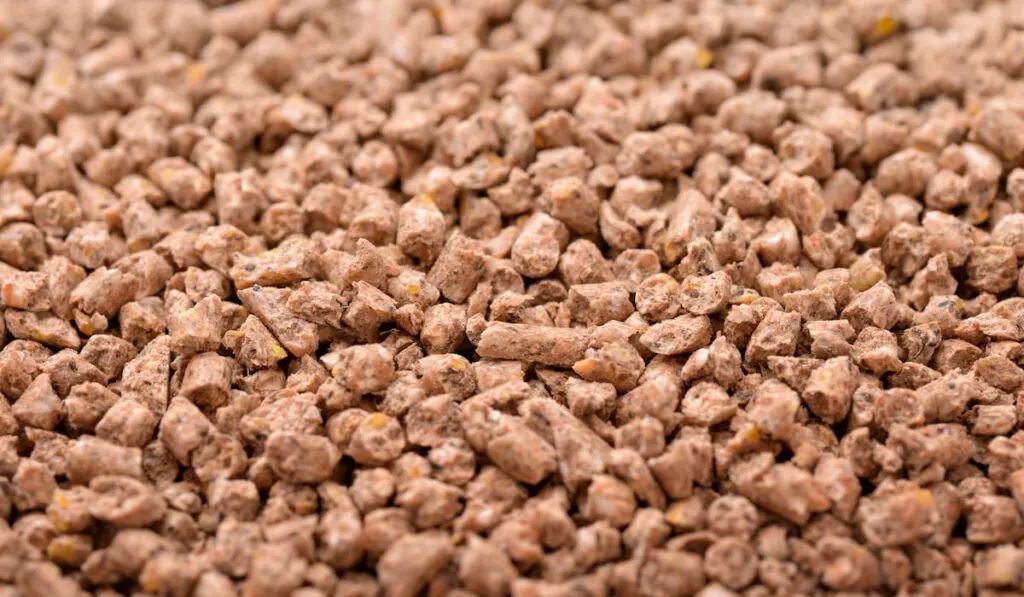
The most common type of feed to give to an emu is ratite feed, although it is of paramount importance that the feed is not stale and within its expiry date.
If you are going to give a feed to your emu, keep it consistent as to not upset the bird’s ability to digest. You can also use turkey/game finisher (never starter) and many owners swear by chicken feed as long as it is supplemented with additional nutrients like leafy greens or veggies.
Alfalfa pellets are a great addition can add a substantial amount of fiber to their diet. The average amount of feed eaten by an emu per day is around 1.5 pounds.
The age of your bird also has a massive effect on what type of food they should be eating. At infancy, they should be given ratite chick crumble, as they begin to change with age so too should their diet.
Produce
An apple a day will not keep your emu at bay, as the saying goes. These curious birds love most types of fruit and vegetable you can think of, from potato to tomato or an apple to an onion.
They are more than happy to munch on any number of things you can find at your local farmers market and a lot of breeders recommend incorporating produce into their meals for a more robust diet and a healthier bird overall.
In their enclosure, you may be tempted to cut down some of the more pernicious weeds, though you may be costing yourself more in fruits and veggies by doing so! These guys love searching for food and will happily eat most weeds and herbs growing in the ground or on trees.
They also have an uncanny ability to sense what is edible and what isn’t when it comes to plants, so rest assured they can work out what is fair game by themselves.
Grains
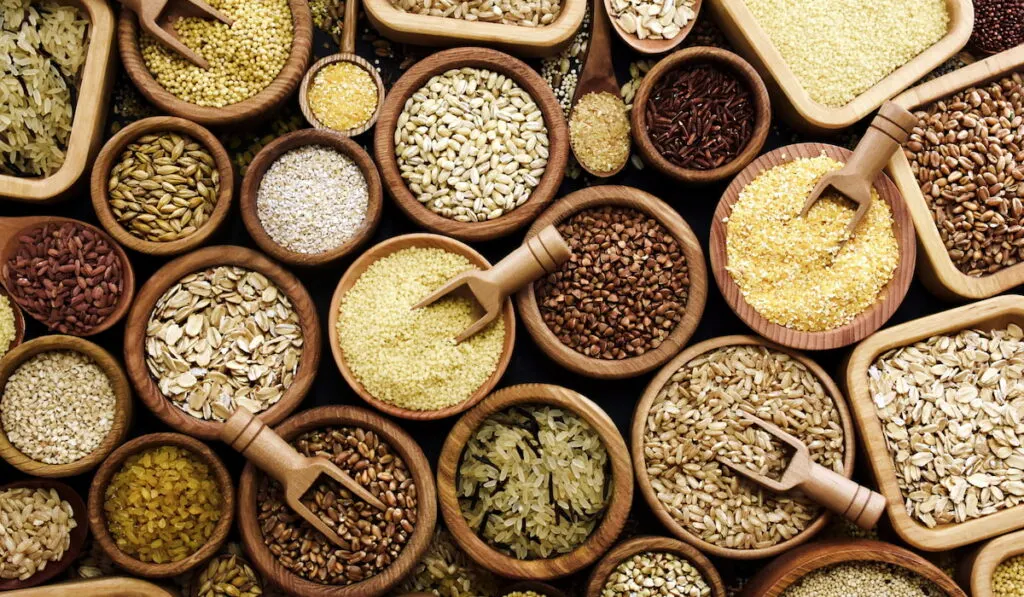
It should come as no surprise that in the ever-expanding pyramid of ratite food groups, emus will more than happily consume most types of grain. Whether it be a field of barley or a handful of sunflower seeds, your emu is sure to make quick work of it once it develops a taste for the food. They also enjoy things like crushed corn, peanuts, and wheat.
It is important to remember, however, that just because they may have a unique passion for something like peanuts, they need a varied diet so too much of any one thing can be very detrimental to your emu in the long term.
Corn especially is problematic due to the fact that they (like humans) are incapable of digesting it, making it abysmal for providing your bird a nutrient-rich diet.
Emu Diet Based On Their Age
In the same way that the diet of a newborn child varies greatly from that of a thirty-two-year-old construction worker, the dietary requirements of an emu are largely shaped by their age.
So in the interest of keeping your mob of emus safe from the dangers of overconsumption or poor dietary habits, let’s lay out a structure of what they should eat in correlation with what point of adolescence to adulthood they are at.
Newborn (0 – 2 Months)
For the first two months of an emus life, it can be sustained on ratite chick crumble with some large shiny objects (big enough that they can’t swallow them) nearby to attract them to the food.
If the emu is very young, it could be encouraged to eat more if you drop a few sprinkles of the feed around them as they tend to peck at the floor and have poor vision as chicks.
Water can also be made easier for the chick if something shiny, like aluminum foil, is placed near or in the bowl itself.
Make sure to put a vitamin B complex in their water through a dropper or buy a specialized bird formula that offers vitamin B to avoid fragile legs. Vitamin E is also important for younger birds as it prevents wry neck, a painful condition that contorts the neck.
Breeders have also recommended that giving them small bits of fruits and vegetables can be beneficial, as long as the food is not left out with the chick. You should feed chicks about twice a day.
Adolescent (2 – 12 Months)
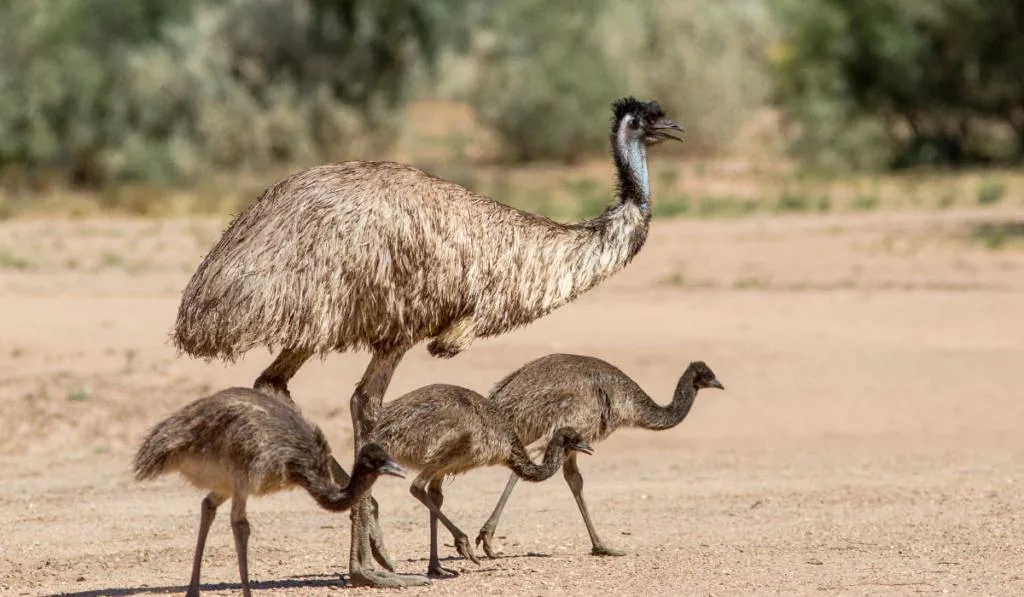
Sources vary on when exactly you should incorporate ratite grower into the diet of an emu, but they vary from about 1 month to 2.
So at two months (if not earlier depending on who you ask), be sure to start incorporating feed that offers more protein as this will keep the amount of food most emus eat to just under two pounds daily. This should be done slowly, phasing the new grower feed in while you slowly and subtly phase out the chick feed.
It is important to still offer vegetables and grain at this time to help supplement their diet, and doing so by hand can help the taming process along as they grow to depend on you for food.
Adult (12 months onward)
It’s at this time most handlers choose to migrate their growing birds into free feed areas with other emus.
At this age the maintenance of the bird can be a bit easier depending on how grown in their enclosure is and how many trees, insects, grains, and weeds they have to forage for.
Typically an adult emu will consume close to 1.5 pounds of feed a day, depending on how successful a graze they have had or how much other food is given to them by their handlers.
This can go down to as little as one pound if they are in their breeding season, however.
The ratite feed given to them should be entirely sufficient for maintaining their nutritional needs, though fruits and vegetables given as desserts are perfectly fine and probably heavily encouraged by your emu.
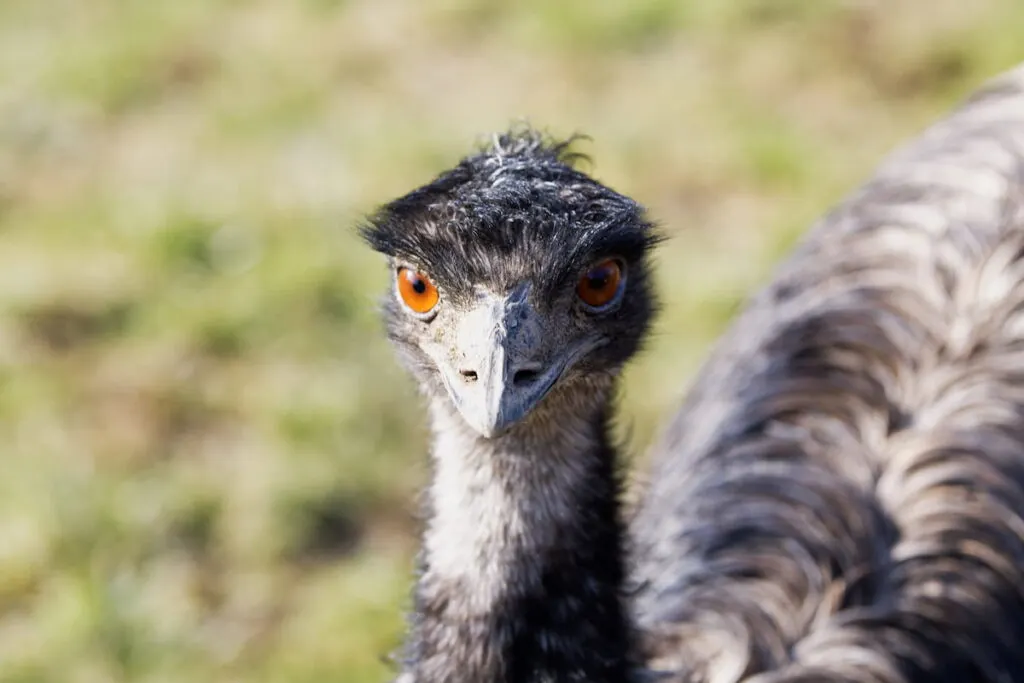
Key Points To Remember
There are a few things I came across while studying up for this article that I feel are necessary tidbits of information, on top of the information you may have skimmed past earlier.
- Emus can and will eat stones to help encourage digestion, they are called gastroliths which they store in the gizzard. This is not a cause for concern.
- When buying feed for an animal, try to do it ahead of time as getting the specific type needed for most ratites can take longer than expected, as most stores won’t have it in stock.
- Try to keep the grass and flora in their enclosure in good condition, as they will not eat dying plants or grass due to the lack of nutrients.
- If you live in an area with any type of winter, try to plan for dying grass by adjusting their daily food intake (on top of keeping them in a dry enclosure).
- While you can give them the feeds of other animals, most breeders and handlers recommend keeping them to a ratite feed exclusive diet. This is also due to them acquiring specific tastes for certain foods, so once you get them on it, it could become difficult to wean them off.
Owning an emu is a tough and expensive gig, with several hurdles along the way. The knowledge needed alone is daunting enough to make someone cower away from the idea at all.
Though if you are studious and careful, before long you can reap the rewards of a bird with several uses and a sweet, affectionate disposition!
References:
- https://feedingnature.com/what-do-emus-eat/
- https://animals.net/emu/
- https://birdfact.com/articles/what-do-emus-eat
- https://www.emu.services/keeping-emu.htmlcan
